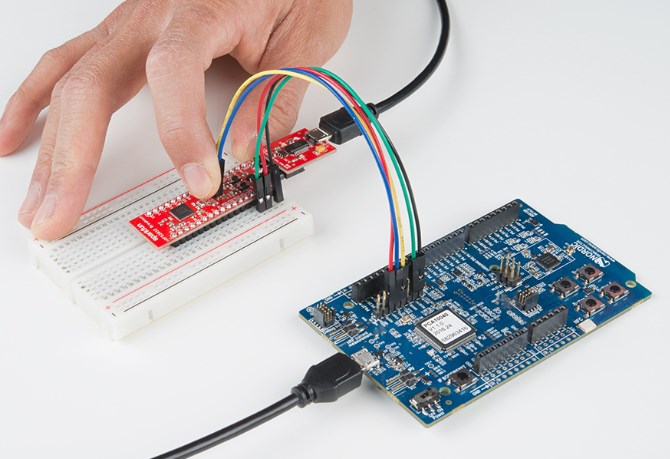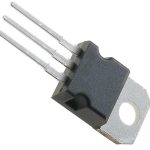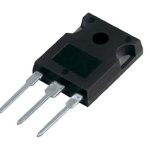With its ability to provide seamless and energy-efficient communication, Bluetooth Low Energy has become an essential component in countless applications. One of the standout solutions in this realm is the NRF52832 System-on-Chip (SoC) developed by Nordic Semiconductor. Combining high performance with a range of advanced features, the NRF52832 is truly a force to be reckoned with in the world of Bluetooth Low Energy.
What is nRF52832?
The nRF52832 is a highly versatile System-on-Chip (SoC) developed by Nordic Semiconductor. It combines a powerful 32-bit ARM Cortex-M4 processor, Flash memory, and a wide range of peripherals into a single chip.
What is the use of nRF52832?
The nRF52832 is primarily used for Bluetooth Low Energy (BLE) applications. It provides seamless wireless connectivity with low power consumption, making it ideal for various IoT devices, wearables, smart home devices, healthcare sensors, and more.
What Bluetooth version is nRF52832?
The nRF52832 supports Bluetooth 5.0, which is the fifth major version of the Bluetooth standard. Bluetooth 5.0 offers significant improvements over previous versions, including longer range, higher data transfer rates, and enhanced coexistence with other wireless technologies.
Features
- 32-bit ARM Cortex-M4 processor running at up to 64 MHz.
- 512 KB Flash memory for storing program code and data.
- 64 KB RAM for efficient execution of applications.
- Bluetooth 5.0 support for increased range and data throughput.
- Integrated radio frequency transceiver for wireless communication.
- Wide range of digital and analog peripherals, including GPIOs, UART, SPI, I2C, ADC, and more.
- Support for NFC-A tag functionality.
- Advanced security features, including AES encryption and secure bootloader.
- Low power modes and advanced sleep features for optimal energy efficiency.
Price
Below is a price table that you can check it to help you make a budget:

Practical Applications
- Wearable devices: Fitness trackers, smartwatches, heart rate monitors.
- IoT devices: Smart home sensors, lighting control, asset tracking.
- Healthcare: Medical wearables, remote patient monitoring, health sensors.
- Industrial automation: Wireless sensor networks, asset tracking, condition monitoring.
- Consumer electronics: Remote controls, wireless keyboards, gaming peripherals.
- Proximity and location-based services: Beacon technology, indoor navigation systems.
- Automotive: Tire pressure monitoring systems, keyless entry, vehicle diagnostics.
- Sports and fitness: Bike computers, sports performance trackers, activity monitors.
PCB symbol and Footprint


Datasheet
No Clock Signal at the SCL Pin of Sparkfun nRF52832 Breakout Board
If you are not getting a clock signal at the SCL pin of your Sparkfun nRF52832 Breakout Board, there could be several possible causes. Here are some troubleshooting steps you can follow:
1. Check your connections
Ensure that all the necessary connections between your board and the clock source (such as an external crystal oscillator or an on-board crystal) are properly made. Double-check the wiring and ensure that there are no loose or disconnected wires.
2. Verify clock configuration
Make sure that the clock configuration settings in your code or software are correctly set up for the nRF52832. Check the datasheet or reference manual for the correct settings and compare them with your code.
3. Check power supply
Insufficient or unstable power supply can cause issues with clock signals. Verify that your board is receiving a stable power supply within the recommended voltage range. You may also want to check for any power supply-related issues such as voltage drops or noise.
4. Test with a different clock source
If possible, try using a different clock source (e.g., a different crystal oscillator or a different board) to rule out any potential issues with the current clock source. This will help determine if the problem lies with the clock source or the breakout board itself.
5. Measure signal with an oscilloscope
Use an oscilloscope to directly measure the SCL pin’s signal. This will help you verify if there is indeed no clock signal or if it is too weak to be detected by other means. It can also help identify any abnormalities in the signal waveform.
6. Consult the manufacturer or community
If none of the above steps resolve the issue, consider reaching out to the manufacturer’s support or consulting relevant online communities or forums for assistance. They may have encountered similar issues before and can provide specific guidance or solutions.
FAQs
How fast is nRF52832?
The nRF52832 is a powerful System-on-Chip (SoC) designed for Bluetooth Low Energy (BLE) applications. In terms of speed, it features a 32-bit ARM Cortex-M4 processor running at a maximum frequency of 64 MHz. This allows for efficient and fast execution of code, making it suitable for various IoT devices and wearables.
What is the max current for nRF52832?
The maximum current consumption of the nRF52832 depends on the specific usage scenario and the power-saving features employed. In active mode, with the radio enabled, the current consumption can range from a few milliamperes to around 15 mA, depending on the transmit power level.
What is the difference between nRF51822 and nRF52832?
The nRF51822 and nRF52832 are both BLE SoCs developed by Nordic Semiconductor, but they have some notable differences. Firstly, the nRF52832 offers improved performance over the nRF51822, with a faster processor and more available RAM and Flash memory.
It also supports additional features such as NFC-A tag support, an increased number of peripherals, and enhanced security options. Overall, the nRF52832 provides greater flexibility and capabilities compared to its predecessor.
What is the difference between nRF52833 and nRF52832?
The nRF52833 is another member of Nordic Semiconductor’s nRF52 series. Compared to the nRF52832, the nRF52833 offers several enhancements. It includes a larger amount of Flash memory, which allows for more complex applications.
Additionally, the nRF52833 provides improved power efficiency, with lower current consumption during active and standby modes. It also adds support for Bluetooth 5.1 features such as Angle of Arrival (AoA) and Angle of Departure (AoD), enabling precise positioning and direction finding.
Is nRF52 a microcontroller?
Yes, the nRF52 series, including the nRF52832, is based on a microcontroller architecture. It combines a powerful processor, various peripherals, and wireless communication capabilities into a single chip. This integration makes it a versatile solution for IoT devices, wearables, and other applications that require both processing power and connectivity.

Conclusion
Embracing the NRF52832 SoC opens up a realm of possibilities for developers seeking to create innovative Bluetooth Low Energy devices. Its robust performance, extensive feature set, and low power consumption make it an ideal choice for a wide range of applications. With the NRF52832 at your disposal, you can unlock the true potential of BLE and bring your ideas to life in ways you never thought possible.




